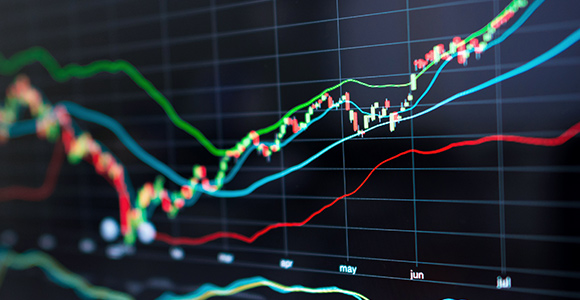Carbon Credit ETFs Grow as Emission Caps Drop
By: Andres Rincon
October 13, 2022 - 5 minutes
In the race to reduce and eliminate carbon emissions, governments around the world created carbon allowances to incentivize countries and companies to reduce emissions. As a new asset created by climate-focused societies, these allowances became a tradeable commodity, which in turn gained and lost value based on scarcity, demand and need for emissions reduction. The carbon allowances were then used regionally to create a pulsing and growing futures market that could be used by corporations and institutions to get exposure to this new asset or offset emissions. Enter Carbon Credit ETFs, a market which has grown in North America and Europe over the last few years and recently began to grow in Canada.
What are Carbon Credits?
Countries that are below their emission targets and have unused carbon units, can engage in carbon trading and sell these units to countries who are over their target emissions. Carbon credits permit owners to emit a certain amount of greenhouse gases. One credit permits the emission of one ton of carbon dioxide or the equivalent of other greenhouse gases. The carbon market allows participants to trade carbon credits and provide financial incentives to shift away from fossil fuels and enhance energy efficiency. This market driven mechanism to reduce carbon emission is called cap-and-trade. Regulators set a cap on businesses' carbon emissions, which gradually decreases over time. Companies are incentivized to reduce emissions to stay under the cap, or they need to buy carbon credits on the market to regulate additional emissions. Currently, the European Union Emissions Trading Scheme (EU ETS) is the largest trading system for carbon credit.
In essence, carbon credits and their futures are one of the most "good-deed" investments that have emerged in the last few years. These products aim to create value in the process of combating climate change and achieving a green economy. Attention towards these products has intensified this year as the energy crisis highlighted the urgency of decarbonization. More investors are eyeing carbon credits to promote environmental awareness as they financially reward companies with fewer carbon emissions. With governments and regulators emphasizing carbon-neutral targets, there is a growing need for investors to understand carbon credits.
In essence, carbon credits and their futures are one of the most "good-deed" investments that have emerged in the last few years. These products aim to create value in the process of combating climate change and achieving a green economy. Attention towards these products has intensified this year as the energy crisis highlighted the urgency of decarbonization. More investors are eyeing carbon credits to promote environmental awareness as they financially reward companies with fewer carbon emissions. With governments and regulators emphasizing carbon-neutral targets, there is a growing need for investors to understand carbon credits.
Carbon Markets Introduction
There are two types of carbon markets – compliance and voluntary markets. The compliance market is typically where large emitters obtain or retire emissions allowances, credits or permits. Each year, some companies produce fewer emissions than the credit they've received, generating a surplus of carbon credits, while others produce more emissions than the allocated credits. These companies must purchase carbon credits to offset their emissions as regulators require. These transactions happen in the compliance market, where companies with carbon credit surpluses are rewarded financially. On the other hand, the voluntary carbon market enables the purchase of carbon credits to reduce greenhouse gas emissions for reasons other than compliance with a regulatory regime. Participants in this market are companies and individuals who are environmentally conscious and choose to offset their greenhouse gas emissions. These transactions are purely voluntary as regulators do not mandate the participants. Currently, the compliance market is significantly larger than the voluntary market, accounting for over 98% of total volume transacted in 2021. Most Canadian and U.S. listed carbon ETFs invest in the compliance markets given their significant market size and strong liquidity.

Emissions Trading Systems
The compliance carbon market is facilitated by emissions trading systems (ETS), which are governed by a regulatory body that sets a cap on emissions. ETS programs across the globe cover 16% of global emissions. EU ETS, the largest trading system for carbon credits, accounted for 77% of 2021 volumes and 90% of dollars transacted. Other major ETS markets include North America, China, the UK and New Zealand. ETFs listed in the U.S. and Canada mainly invest in European Union Allowance (EUA), California Carbon Allowance (CCA), Regional Greenhouse Gas Initiative (RGGI), and UK Allowance (UKA). It is worth noting that China's emissions trading system that launched in 2021 is expected to be the largest in the world. Currently, there are no North American ETFs invested in the Chinese ETS market.

Why Investors Buy Carbon Credits?
Investing in carbon credits has several economic benefits in addition to the environmental benefits. Carbon credits have a low correlation to traditional assets and provide a portfolio diversification benefit. For example, the Dec 22 EU ETS future has gained 13% over the last year while the S&P 500 index has lost 18% over the same period. In this regard, holding carbon credits in a portfolio may help offset the volatility of other markets to some extent, particularly during market pullbacks. Additionally, with the carbon emission cap gradually dropping over time, the value of carbon credits is also expected to increase over time. With scarcity as an integral part of the market, investors in carbon credits may benefit from the price appreciation of a market of declining availability. As major governments and institutions continue to enhance their commitments to a green economy, tighter regulations for greenhouse gas emissions are expected to increase the usage of carbon credits, thus benefiting investors who currently hold these products.
Splitting Canadian-listed Carbon ETFs
The Canadian ETF market now offers three ETF alternatives for investment in carbon credits. There are also three compliance-linked carbon credit ETFs listed in the U.S., which have accumulated sizeable assets.
It is fair to question why such a highly commoditized asset needs multiple ETFs in Canada. Especially considering there are only three in the U.S. listed today (compliance market only). If the gold or crypto market is any indication, there is space for differentiation and enough assets to be spread around amongst multiple issuers. There are over $90bn in assets and over 20 ETFs listed in the U.S. that provide exposure to gold. If carbon lives up to its potential, the half-dozen products listed today in North America should be enough to not oversaturate the market.
Metrics captured as of October 13, 2022.
It is fair to question why such a highly commoditized asset needs multiple ETFs in Canada. Especially considering there are only three in the U.S. listed today (compliance market only). If the gold or crypto market is any indication, there is space for differentiation and enough assets to be spread around amongst multiple issuers. There are over $90bn in assets and over 20 ETFs listed in the U.S. that provide exposure to gold. If carbon lives up to its potential, the half-dozen products listed today in North America should be enough to not oversaturate the market.
Metrics captured as of October 13, 2022.

Director and Head of ETF Sales & Strategy, TD Securities

Director and Head of ETF Sales & Strategy, TD Securities

Director and Head of ETF Sales & Strategy, TD Securities





